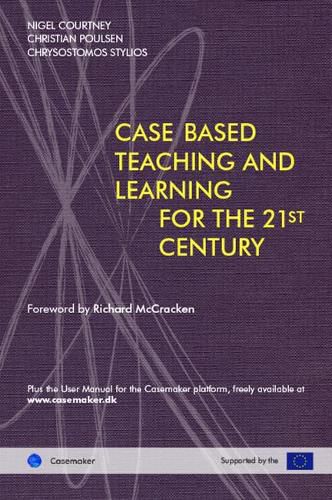Readings Newsletter
Become a Readings Member to make your shopping experience even easier.
Sign in or sign up for free!
You’re not far away from qualifying for FREE standard shipping within Australia
You’ve qualified for FREE standard shipping within Australia
The cart is loading…






This title is printed to order. This book may have been self-published. If so, we cannot guarantee the quality of the content. In the main most books will have gone through the editing process however some may not. We therefore suggest that you be aware of this before ordering this book. If in doubt check either the author or publisher’s details as we are unable to accept any returns unless they are faulty. Please contact us if you have any questions.
Case-based learning has become a common instructional method across higher education and is likely to be encountered in all disciplines. Its essence is a focus on real situations which require diagnosis and treatment. In Case-based Learning in Higher Education it is explored by the Editors and contributors within the three separate but interrelated themes of concepts, theories and outcomes.
The advantages of using cases are that they tend to resonate with students because of their realism and authenticity, and their experiential nature provides specific examples of theory in context. They also require students to practise their analytical, logical, and other high-order thinking skills, and provide opportunities for work in teams. The downside is that cases are not personal, so students have no stake in the ‘company’ or ‘organisation’ and cannot truly empathise with the protagonists.
But overall, the strength and value of the case method is clear, as is demonstrated by these eleven detailed descriptions of its use in a variety of different contexts internationally. Each of the cases described here contains key lessons about the value of case-based learning and the benefits it delivers. There are also ideas about design approaches which can increase the effectiveness of cases. One of the key conclusions is that, since case-based learning requires students to negotiate, argue, and reflect on their knowledge, they develop more responsibility and independence, thereby improving their personal and interpersonal skills. This process can have a demonstrable impact on student self-esteem and self-confidence, both of which increase a student’s employability in the professional world which faces today’s and tomorrow’s graduates from higher education.
$9.00 standard shipping within Australia
FREE standard shipping within Australia for orders over $100.00
Express & International shipping calculated at checkout
This title is printed to order. This book may have been self-published. If so, we cannot guarantee the quality of the content. In the main most books will have gone through the editing process however some may not. We therefore suggest that you be aware of this before ordering this book. If in doubt check either the author or publisher’s details as we are unable to accept any returns unless they are faulty. Please contact us if you have any questions.
Case-based learning has become a common instructional method across higher education and is likely to be encountered in all disciplines. Its essence is a focus on real situations which require diagnosis and treatment. In Case-based Learning in Higher Education it is explored by the Editors and contributors within the three separate but interrelated themes of concepts, theories and outcomes.
The advantages of using cases are that they tend to resonate with students because of their realism and authenticity, and their experiential nature provides specific examples of theory in context. They also require students to practise their analytical, logical, and other high-order thinking skills, and provide opportunities for work in teams. The downside is that cases are not personal, so students have no stake in the ‘company’ or ‘organisation’ and cannot truly empathise with the protagonists.
But overall, the strength and value of the case method is clear, as is demonstrated by these eleven detailed descriptions of its use in a variety of different contexts internationally. Each of the cases described here contains key lessons about the value of case-based learning and the benefits it delivers. There are also ideas about design approaches which can increase the effectiveness of cases. One of the key conclusions is that, since case-based learning requires students to negotiate, argue, and reflect on their knowledge, they develop more responsibility and independence, thereby improving their personal and interpersonal skills. This process can have a demonstrable impact on student self-esteem and self-confidence, both of which increase a student’s employability in the professional world which faces today’s and tomorrow’s graduates from higher education.